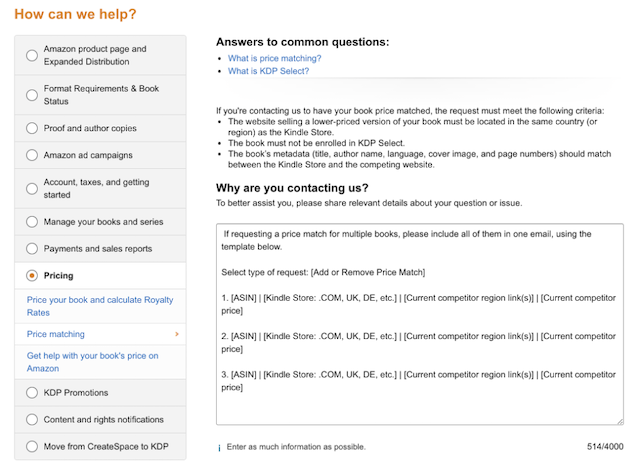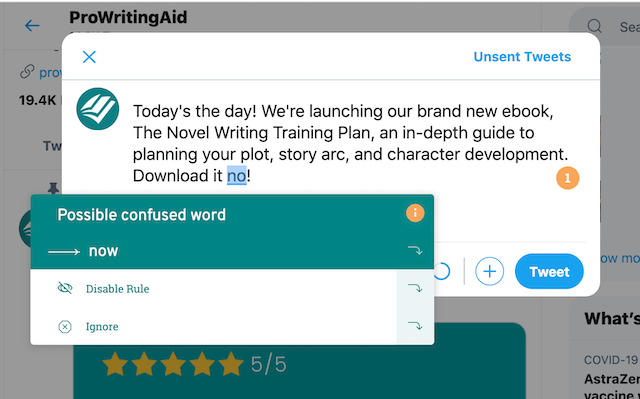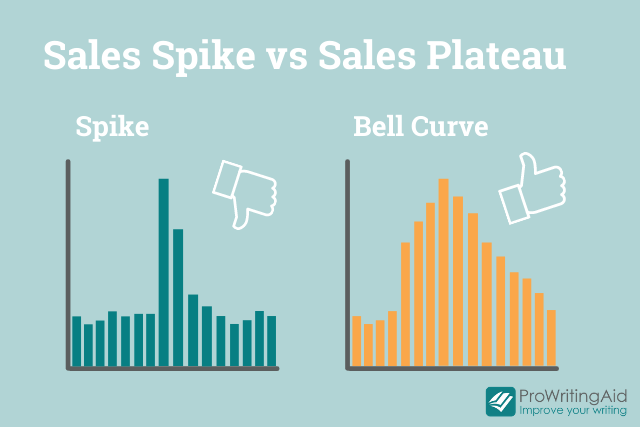
I’ve written and spoken at length about the importance of having a marketing plan if you’re going to launch a book—not only to organize all the activities you’ll have to complete when you launch but also, more importantly, to make sure you don’t forget any crucial ones.
And yet when it came time to release my first book, How to Market a Book: Overperform in a Crowded Market, earlier this year, there were quite a few things that surprised me—some pleasantly, others less so.
In this post, I’ll be sharing the five main things I learned from launching my first book and how you can apply them to your own future launches.
1. KDP Support Is Your Friend (If You Ask the Right Questions)
You only tend to hear horror stories about KDP (Kindle Direct Publishing) customer service: how they don’t reply in time or never have answers to the complicated questions about Amazon self-publishing. But I have to say that in my experience, they’ve been particularly fast and helpful.
As soon as my book was out on all retailers (I’d set it as free on non-Amazon retailers via Draft2Digital), I requested that KDP support price-match it to free. Their website has a dedicated section and message template for that:

They got back to me in less than 24 hours and had price-matched everywhere, except for India (for whatever reason). I re-sent a similar message asking for the price-match in India, and a few hours later, my book was free absolutely everywhere.
I did the same thing to request additional categories for both my eBook and paperback, and again got those in less than 24 hours—very efficient overall! Just make sure to be clear in your request and use their predefined templates.
Note: If you didn’t know that authors can request additional Amazon categories (up to 10), nor how you should research and select those, then you should really read my book! Did I mention it’s free on all retailers?
2. Wide Retailers All Have Their Kinks
As I mentioned, I used Draft2Digital to get my book on all the “wide retailers:” Apple Books, Barnes & Noble, Kobo, Tolino, etc. and into the library system (Overdrive, Hoopla).
The great advantage of this was that I only had to enter the metadata once—that’s what’s cool about aggregators. The drawback is that I wasn’t able to customize it for each store… and each store has its own kinks and special requirements.
For example, my Amazon book description ends with:
Best of all, the eBook version is and will always remain 100% FREE. Get your copy now and benefit from all the experience of a seasoned marketing professional.
But when I tried to use it on Draft2Digital as well, it blocked the publishing process because apparently, some retailers don’t tolerate claims about price in the description—which is fair enough, and led to a good learning experience.
Another example: since Draft2Digital doesn’t distribute through Google Play, I published on Google Play Books directly, so as to have my book available (and free) on all major retailers right at launch. The problem I ran into there, though, is that Google Play has a much longer approval process for new authors/publishers.
First, I had to verify my bank account by receiving a small transfer from Google Play (which took a couple days to arrive). Then, my account (and book) stayed in review for 10 more days. This is just for new accounts, so I won’t have the problem for my next book, but it delayed my initial launch on the Play store by two weeks.
Which leads me to my next learning point…
3. Not Everything Can Go According to Plan
This might have been the first book I wrote and published, but I’d already worked with countless authors in the past, helping them plan their launches and promote their books. Every time, there are a few things that don’t go according to plan—or worse, mess up the plan altogether.
As authors, we rely on a number of tools and services to help us distribute and market our books: the retailers, their customer support teams, the advertising platforms, email marketing services, price promotion sites, BookFunnel, etc. These make our jobs a lot easier, but they also mean we’re dependent on them.
If Facebook suddenly decides to close your advertising account (as they’ve done for many authors recently without any good reason nor warning) right before your launch, a huge, crucial part of your plan might go up in flames.
If MailerLite’s servers are down right when you planned on sending your new release newsletter—as happened to David Gaughran—more of the same.
In my case, a tiny typesetting error on the paperback delayed its launch by 48 hours. Not a big deal, but it meant I had to delay all the newsletters and promo I had planned, as I imagined a good portion of our audience would want to grab the paperback (and they did).
All that’s to say, you can’t plan for everything—but you can (and should) plan for some things to go wrong, and be flexible about it. Whether it means rescheduling your promotions or turning to other advertising platforms, make sure you either have contingency plans in place, or that you’re able to successfully make one up on the fly.
Focus On What You Can Control
Your book launch strategy is probably wide-ranging, but most parts will have one thing in common: the written word.
From newsletters to social media posts to website sales copy, the writing you do after you’ve finished your book is just as important on the words on its pages.
Even if your book is word perfect, if your promotional copy isn’t up to scratch, your potential readers just won’t bite. Use ProWritingAid to make sure you’re presenting your book in the best light.

Our Chrome extension will help you fix typos in tweets, emails, Facebook posts, and blog articles—you’ll find helpful suggestions anywhere you write online. Its suggestions will not only fix spelling and punctuation issues, but will also help you to make your work more clear, readable, and engaging.
Your email server might go down, or your advertising platform might fall through—sometimes these things happen. One thing you don’t need to leave up to chance is your grammar.
4. Your Network Is Your #1 Marketing Tool
For my launch, I was lucky that I could count on a pretty massive Reedsy mailing list that we’d cultivated over the years—in fact, a lot of the material for the book originated with newsletters I’d sent to that list.
But since the paperback wasn’t ready at launch, I held off on sending anything until the next day. Instead, I just dropped a quick message to let all my friends, Reedsy partners, and other people I’d met at conferences know about the book. And I was blown away by the results.
I got close to 1,500 downloads in the first day just from these people sharing the book on their Facebook groups, social media, and even in personal newsletters—despite the eBook not having a single review on Amazon at that point.
Of course, the fact it was free meant it wasn’t a big risk for people to take, but I also think that there is no better promotion for your book than other people’s word of mouth. Instead of me telling you “hey, my book is great, go download it,” it’s other people telling their audience that my book is worth reading—and such an endorsement is a lot more powerful.
How can you replicate this for your launches? It’s simple: make friends in your niche. I’ve found that the best way to do that (for me) was through conferences, where you get to meet people in person, share drinks/meals, etc.
Nowadays, that’s more difficult, but there are plenty of virtual alternatives. To name one: Clubhouse. After participating in just a couple of “rooms” in there I’ve already met new authors and publishing industry people I didn’t know before.
As it grows, I expect rooms dedicated to specific genres to pop up—and if they don’t, nothing prevents you from creating your own. Remember, first movers tend to reap all the benefits when it comes to social media.
5. Sales Plateaus Matter More Than Sales Spikes
One of the things I talk about in the book is Amazon’s preference for sales plateaus versus sales spikes.
In non-jargony terms: it’s a lot more beneficial for your organic visibility to have a sustained level of sales over several days (ideally with a growth curve, like a bell) than a spike on one day and nothing afterwards.

What’s “organic visibility?” It’s basically the visibility that you earn on Amazon, organically, without having to pay for it. See, if Amazon detects that your book is doing well, it’ll recommend it to more people. Sales spikes get ignored, but if Amazon sees strong sales over several days, it’ll take the pattern seriously and start promoting the book for you.
Case in point? After the first few days of heavy promotion (friends, mailing list, some Facebook ads, etc.), my book maintained a solid rank (top 200 on the free store for another week) and sales level (around 500 downloads a day) organically, just as a result of word of mouth and Amazon algorithms. In the screenshot below, you can appreciate the bell curve, as well as the organic “long tail” it earned me afterwards.

Get ready to launch your book more successfully
I hope you’ll be able to apply this advice for your next book launch! And remember, you’ll find a lot more practical advice in my book, which is and will always remain free to download from all retailers!

